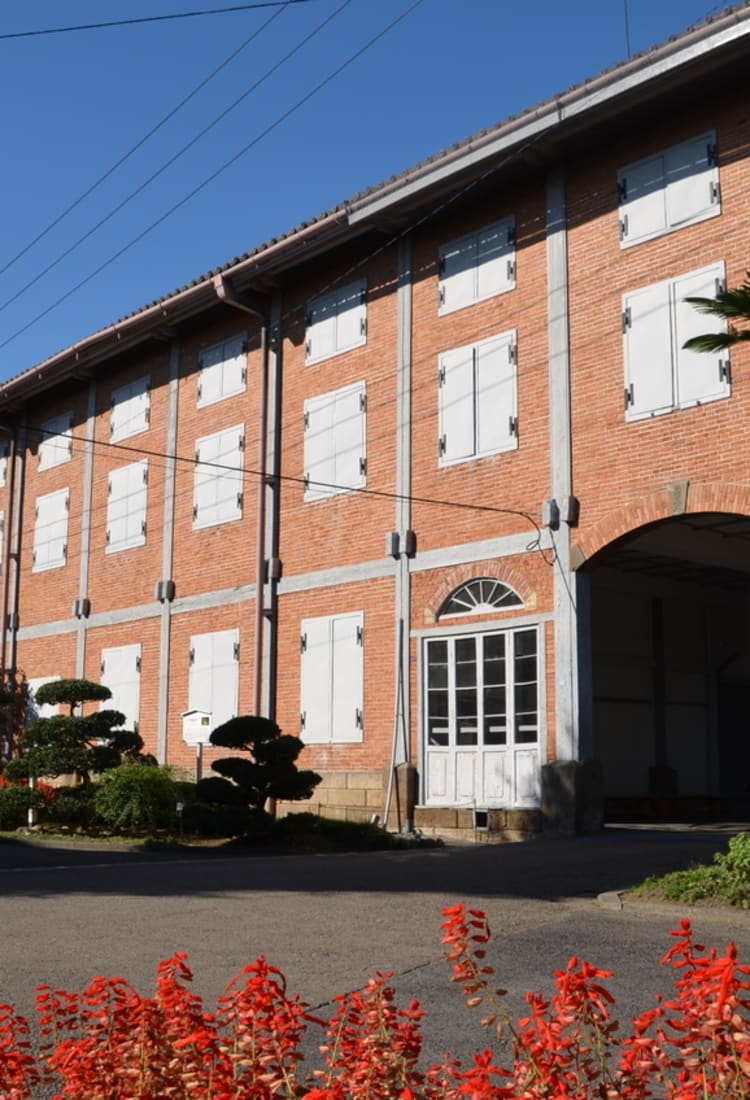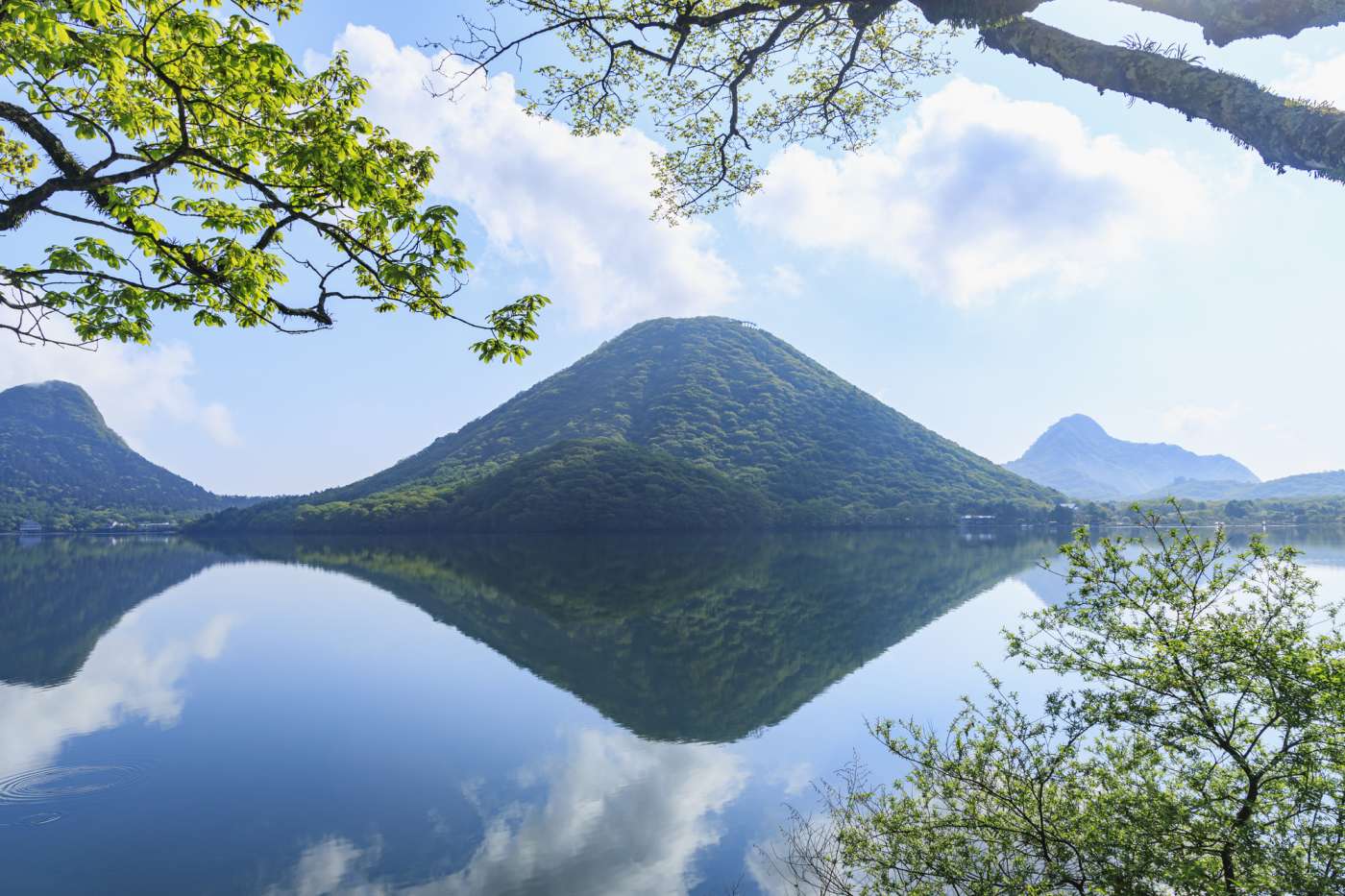
2023.12 Threads of Silk and History in Gunma Prefecture World Heritage Sites
Photo credit: Tomioka City
A Small Rural Town that Created Japanese Silk’s Big Break
Located in southwestern Gunma Prefecture with a distant view of the mountains, the town of Tomioka feels worlds away from the fashion design houses of Tokyo or the entertainment districts of Kyoto where kimono-clad geisha greet guests. If you’ve ever appreciated the beautiful colors, captivating sheen or exquisite smoothness of Japanese silk, Tomioka Silk Mill might be an interesting spot to visit.
The quiet rural town is, in fact, the birthplace of Japan’s modern silk industry. Tomioka was chosen as the site for the country’s first full-scale machine silk reeling factory, and combining local innovations with technology from abroad took Japanese silk from a literal cottage industry to a globally recognized symbol of the country itself.
But how did humble Tomioka, certainly one of Japan’s smaller cities, become such an important part of Japanese history? The answers can be found at the Tomioka Silk Mill itself, which is still standing, and a trio of other silk-related locations, which have been designated UNESCO World Heritage sites.
Tomioka Silk Mill: A historic landmark in Japan’s textile industry

The preserved silk-reeling plant of Tomioka Silk Mill, built in 1872.
Photo credit: Tomioka City
In the late 1800s, Japan reopened to the rest of the world after two and a half centuries of self-imposed isolation. International exchange brought international trade, and Japan, looking for something it could offer to the rest of the world, saw the high demand for silk. Realizing that exporting raw silk instead of silk cloth would be of greater value, in 1872 the Japanese government invited a team of French advisors from France to help establish the Tomioka Silk Mill. The mill became a model for modernization, with inspectors from around Japan visiting to see its efficient imported technology and sturdy brick architecture, both rarities in Japan at the time, as well as its on-site employee cafeteria, medical center and housing.
After 115 years of producing raw silk, the mill ceased operations in 1987, but was preserved as a cultural heritage site where visitors can see the silk-reeling machinery and observe silk reeling demonstrations.
Learn more about World Heritage property Tomioka Silk Mill and Related Sites at the Sekaito Visitor Center

A beautiful bouquet of silk cocoon art known as “Hanamayu” stands inside the entrance of Sekaito, whose name is a combination of the Japanese words “sekai” (world) and “ito” (thread).
Photo credit: Gunma Prefecture
The World Heritage property Tomioka Silk Mill and Related Sites symbolizes Japan's groundbreaking advancements in mass-producing top-quality raw silk and fostering global technological exchange. The Sekaito Visitor Center serves as an invaluable resource, providing deep insights into the significance of these sites, the silk industry and its cultural impact. Free to enter and located just a brief walk from Tomioka Silk Mill, the center offers a comprehensive understanding of Japan's pioneering role in silk production.
Tomioka's strategic selection for the Silk Mill was no coincidence. Situated in a traditional sericultural heartland rich in cocoons and essential resources like freshwater and coal, it became the epicenter for revolutionary advancements. The mill played a pivotal role in training and empowering female workers from around the country. Once they left their jobs and returned to their hometowns, they shared their knowledge and spread the technology.
In 1909, Japan became the world’s largest exporter of raw silk and it accounted for 80% of Japan’s exports in the 1930s. Each of the four sites – Arafune Cold Storage, Tajima Yahei Sericulture Farm, Takayama-sha Sericulture School and Tomioka Silk Mill – contributed significantly to Japan's rise as one of the world's largest raw silk producers. From managing silkworm eggs to refining the reeling process, these sites collectively embody Japan's historic dominance in the silk industry, vividly depicted in exhibits at the Visitor Center.

Photo credit: Gunma Prefecture
At the Visitor Center, visitors are guided through the comprehensive production cycle, beginning with silkworm eggs and culminating in the intricate reeling of raw silk. Arafune Cold Storage facilitated controlled egg storage, enabling precise hatching processes, while Tajima Yahei Sericulture Farm and Takayama-sha Sericulture School refined silkworm nurturing techniques up to the cocoon stage. Tomioka Silk Mill, a technological marvel in its time, revolutionized silk production through mechanization. These exhibits capture Japan's rich heritage in silk production, offering detailed insights into the industry's evolution on the ground floor, with deeper exploration awaiting on the second level.
Going beyond Tomioka: Visiting Gunma’s other World Heritage silk sites

The remains of the Arafune Cold Storage warehouses, located about an hour west of Tomioka Silk Mill.
Photo credit: Gunma Prefecture
Gunma sericulturists discovered that chilling silkworm eggs delays hatching, letting them raise silkworms and produce silk year-round. They didn’t need refrigerators either, thanks to a geographical feature deep in the mountains. On a mountainside partially cleared out by a landslide 400 years ago, rain and snow trapped beneath boulders freezes, cooling the downhill flow of air. Temperatures at the slope’s base remain below 5° C (41° F) even in summer, and so the Arafune Cold Storage warehouses were built to keep eggs chilled until they needed to be hatched.

A silkworm cocoon-raising room at the Takayama-sha Sericulture School.
Photo credit: Gunma Prefecture
Silkworms need proper care after hatching, and local sericulturists Tajima Yahei and Takayama Chogoro found ways to help the delicate creatures thrive. In the mid-1800s, Tajima popularized “koshi-yane,” a circulation-enhancing architectural design where interior openings channeled air to raised roof spaces where silkworms were raised. Takayama then added the idea of using charcoal braziers to optimize interior heat and humidity. Tajima’s descendants now live in this house, but the Tajima Yahei Sericulture Farm courtyard and the ground floor of the mulberry store house are open to the public, and the Takayama-sha Sericulture School can also be visited. For those interested in further information, there are information centers nearby both sites.

The Tajima Yahei Sericulture Farm has a distinctive roof known as the “koshi-yane.”
Photo credit: Gunma Prefecture
Discover more intriguing cultural heritage in Gunma Prefecture

Mt. Haruna’s “Haruna Fuji” protrusion, reflected in the mirror-like waters of Lake Haruna.
An hour north of Tomioka lies Mt. Haruna, with stunning views from its hiking trails, ropeway, lakeside recreation areas and rental boats, and halfway down the mountain is Ikaho Onsen, a very popular hot springs town. Things weren’t always so tranquil and relaxing in these parts, though. Mt. Haruna is actually a dormant volcano, and its last known eruption, which occurred 1,500 years ago, buried the ancient village of Kurio Mine. Modern archeological digs have found well-preserved ceramics, armor and building foundations that shed light on daily life during Japan’s Kofun period (mid-3rd to late 6th centuries).
On the other hand, if you’re interested in adding some Japanese art to your home, Gunma’s Usaburo Kokeshi has been making kokeshi dolls for over 70 years, each handcrafted by a single artisan using wood sourced from mature trees in the forests of the company’s hometown village of Shinto. In addition to finished dolls, Usaburo’s Shinto workshop also offers classes where visitors can paint their own kokeshi, creating a one-of-a-kind reminder of this unforgettable prefecture.

For the kokeshi face painting workshop, visitors can choose from six different shapes.
Photo credit: Usaburo Kokeshi
Information
Tomioka Silk Mill |
|
WEB:https://www.tomioka-silk.jp.e.wv.hp.transer.com/tomioka-silk-mill |
Sekaito Visitor Center |
Arafune Cold Storage |
|
WEB:https://www.visit-gunma.jp/en/spots/arafune-cold-storage/ |
Tajima Yahei Sericulture Farm |
|
WEB:https://worldheritage.pref.gunma.jp/tomikinu/index.php/en/tajima/ |
Takayama-sha Sericulture School |
|
WEB:https://worldheritage.pref.gunma.jp/tomikinu/index.php/en/takayama/ |
Mt. Haruna |
Usaburo Kokeshi |
























































